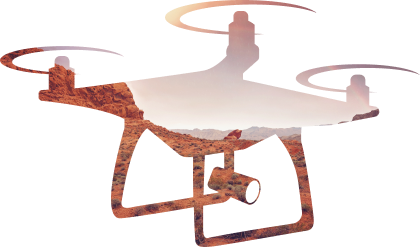The HDRFS Project Vision is to enable healthy coexistence with wildland fire and to mitigate wildfire danger to human life, infrastructure, and the landscape in Nevada and the intermountain western U.S.
About Us
VISION STATEMENT
MISSION STATEMENT
The HDRFS Project Mission is to increase the capacity and excellence in Nevada for wildland fire research, research infrastructure planning and coordination, education, and workforce development and to demonstrate this through Team Science in the regionally important sagebrush ecosystem.
Project Overview
The overarching goal of the RII Track-1: Harnessing the Data Revolution for Fire Science (HDRFS) project is to increase the capacity of Nevada for wildland fire research, education, and workforce development and to demonstrate this increased capacity through technology-enhanced fire science in the regionally important sagebrush ecosystem.
This project addresses Grand Challenges by the National Science and Technology Council for reducing and mitigating wildland fire-related disasters in the western U.S. due to changes in wildfire regimes and increased wildfire potential (WFP). Nevada and its neighboring states have the highest WFP in the nation. This project will fill knowledge gaps about fire processes and their effects on smoke emission, ecology, and hydrology in the sagebrush ecosystem of the intermountain west.
This project will inform and improve land and fire management by providing scaling of fire effects and impacts from smaller to larger fires in our fire science areas:
These fire science areas will be supported by Education/Workforce Development, creating end-to-end pipelines for research and STEM advancements. HDRFS has an integrated approach through the common topics of scaling of wildland fire processes and effects, joint prescribed burn experiments, and common data-focused technology platforms.
This project will develop infrastructure and build capacity for the characterization of pre- and post-fire ecosystem carbon and water fluxes, fire processes and emissions, and for Computer Vision / Machine Learning (CV/ML) analysis including data fusion and products.
HDRFS deeply integrates with Nevada education and workforce development via educational activities, mentorship, and other efforts in the Nevada System of Higher Education (NSHE) to grow a nimble and diverse STEM workforce.
The project draws on strengths of data and wildland fire science through a series of focused activities to train teachers and students. The proposed research and educational activities will advance Nevada STEM capacity and all major components of this proposal are focus or priority areas of the Nevada Science and Technology Plan.
Intellectual Merit
HDRFS will explore the fire continuum of diverse processes interacting across scales in the sagebrush ecosystem.

Goals include:
- Improving understanding of fire processes and effects over spatial scales;
- Determining fire’s interactions with carbon cycling, water balance, fuel buildup, and invasive species;
- Increasing our mechanistic understanding of fire-induced soil hydrophobicity and its influence on hydrology;
- Improving models of fire processes and eco-hydrological fire effects;
- Improving characterization and modeling of fire emissions and their aging;
- Adapting aerial robots for greatly improved data collection under hazardous or challenging conditions (e.g., characterizing smoke plumes, fire processes, and ecohydrology);
- Developing CV/ML data fusion to process and assimilate multisensory data into fire and ecosystem models.
HDRFS will provide new quantitative understanding across these areas. The proposed research will contribute to understanding the spatial scaling of fire processes and effects over ~eight orders of magnitude in area, to use laboratory and other small-scale results for predicting and modeling large scale wildland fire processes and effects.
Broader Impacts
HDRFS will help Western U.S. communities to reduce wildland fires impacts related to human smoke exposure and safety, ecosystem services (e.g., water supplies and recreational opportunities), and wildland and fire management. Integrated educational activities will:
- Advance the abilities of pre-service and in-service NV educators to teach basic systems modeling through fire science to students with standards-based materials;
- Increase access to STEM research for NV PUI students through data analytics scholarships followed by three-month project internships;
- Broaden STEM research participation through proposal-writing workshops for applicants for Undergraduate Research Opportunity Program scholarships (UROPs).
Recruiting underrepresented students, postdocs, and faculty, and establishing new educational programs, will build a larger, more diverse NV STEM workforce.

 Ecology
Ecology Fire Processes
Fire Processes Hydrology
Hydrology Fire Emissions and their Atmospheric Aging
Fire Emissions and their Atmospheric Aging Cyberinfrastructure Innovations
Cyberinfrastructure Innovations Acknowledgement: This material is based upon work supported by the National Science Foundation under Grant No. OIA- 2148788.
Acknowledgement: This material is based upon work supported by the National Science Foundation under Grant No. OIA- 2148788.